I found myself out in the country-side shortly after sunset on the gravel with a few gauchos (cowboys) leaning against their bakkies (pick-up trucks) drinking their evening chimarrão (mate). The owner of a well known yerba mate brand was among us. I told him that his brand was the first one I had tried back in March after arriving in Brazil and asked whether I could visit his factory. He didn't only agree, he gave me a lift from Machadinho to Barão de Cotegipe, the town where the factory is, paid my hotel room for the night and arranged for my supper.
The following morning at 07:30 sharp I was picked up and taken to the place where it all happens
. The Barão de Cotegipe erva-mate factory was in full swing when we arrived and I went in with an all access pass to see how they make erva...
HOW THEY MAKE ERVA...
1. Trucks loaded with freshly harvested leaves arrive and are weighed. The famer gets roughly US$ 9 for every 15kg's of harvest.
2. The leaves get unloaded into a huge revolving cylindrical turbine, the inside of which is heated to between 500 and 700 degrees Celcius from one end by wood fire. The internal structure of the turbine automatically moves the leaves from one end to the other, a process of about 2-3 minutes in order to kill the natural fermentation processes in the leaf, which preserves both flavour and colour (green). Similar methodology is used in green tea production to preserve the "green".
3. The semi-dry raw material enters a smoke-free "hot house" with a temperature of about 100 - 200 degrees Celcius where it spends 4 hours to dry further.
4. The dried raw material gets ground coarsely.
5
. The coarsely ground erva then enters the mill to get ground to a very fine consistency. The finely ground erva is immediately packaged and prepared for dispatch to market. The yerba which they produce solely for export to Uruguay gets "aged" for 6 months before being packed.
After the tour, the lady of the house prepared a tasting for me and was adamant that I eat a cracker between each product tasting. "I don't eat gluten" I said. She left the room and returned 5 minutes later with a green apple. Here are some elements in evaluating yerba and possible explanations for the facts...
YERBA MATE TASTING
1. Colour - any black leaves means burned yerba, a greyish/yellowish shine means old (or aged) yerba, light green yerba means plant grew in direct sunlight, dark green yerba means it grew in shade.
2. Smell - smoky ( either intentional exposure to smoke or green wood used or chimney system faulty), seaweed ( for me characteristic of Brazilian erva), grassy ( mature leaves were used) and many more
.
3. Stems vs leaves - the more stems the less intense the flavour. Good brands in Brazil use a ratio of 70/30 leaves to stems.
4. Coarseness - the finer the grind, the smoother the taste. This could be because more sugars are released when the erva is finely ground.
5. Taste - for me its easiest to distinguish tastes in yerba if the infusion has been left to cool. Dark erva tastes nutty to me and light green erva generally has a slightly smoky taste.
VIDEO PLAYLIST FOR THIS ENTRY: VIDEO
Out Of the Mill Into My Gourd
Wednesday, May 28, 2014
 Barão de Cotegipe, Rio Grande do Sul, Brazil
Barão de Cotegipe, Rio Grande do Sul, Brazil
Other Entries
-
1Brazilian Hospitality In and Around Favelas
Mar 1673 days prior Sao Paulo, Brazilphoto_camera13videocam 1comment 9
Sao Paulo, Brazilphoto_camera13videocam 1comment 9 -
2Gone Down South
Mar 3059 days prior Porto Alegre, Brazilphoto_camera17videocam 2comment 5
Porto Alegre, Brazilphoto_camera17videocam 2comment 5 -
3Brazilian Students Show Me How To Party
Apr 0454 days prior Pelotas, Brazilphoto_camera16videocam 0comment 0
Pelotas, Brazilphoto_camera16videocam 0comment 0 -
4Settled In
Apr 1147 days prior Porto Alegre, Brazilphoto_camera24videocam 0comment 2
Porto Alegre, Brazilphoto_camera24videocam 0comment 2 -
5Portuguese In The Bag, Time To Hit The Road
Apr 2929 days prior Porto Alegre, Brazilphoto_camera30videocam 0comment 3
Porto Alegre, Brazilphoto_camera30videocam 0comment 3 -
6The National Brazilian Yerba Mate Fest.
May 0622 days prior Venancio Aires, Brazilphoto_camera27videocam 0comment 3
Venancio Aires, Brazilphoto_camera27videocam 0comment 3 -
76th South American Yerba Mate Congress, Uruguay
May 0820 days prior Montevideo, Uruguayphoto_camera35videocam 0comment 7
Montevideo, Uruguayphoto_camera35videocam 0comment 7 -
8SHORT ENTRY: Getting Back to Brazil
May 1315 days prior Santana do Livramento, Brazilphoto_camera1videocam 0comment 3
Santana do Livramento, Brazilphoto_camera1videocam 0comment 3 -
9SHORT ENTRY: Over-Night in Santa Maria
May 1414 days prior Santa Maria, Brazilphoto_camera1videocam 0comment 0
Santa Maria, Brazilphoto_camera1videocam 0comment 0 -
10High Quality Yerba Mate, Brazil - Part 01
May 1513 days prior Palmeira das Missões, Brazilphoto_camera42videocam 0comment 4
Palmeira das Missões, Brazilphoto_camera42videocam 0comment 4 -
11VIDEO ENTRY: Valley of Cuias (Gourds)
May 199 days prior Frederico Westphalen, Brazilphoto_camera28videocam 0comment 2
Frederico Westphalen, Brazilphoto_camera28videocam 0comment 2 -
12SHORT ENTRY: Wet, Cold and High
May 217 days prior Marau, Brazilphoto_camera10videocam 0comment 0
Marau, Brazilphoto_camera10videocam 0comment 0 -
13High Quality Yerba Mate, Brazil: PART 02
May 226 days prior Ilópolis, Brazilphoto_camera42videocam 0comment 1
Ilópolis, Brazilphoto_camera42videocam 0comment 1 -
14Getting Technical About Yerba
May 271 day prior Machadinho, Brazilphoto_camera6videocam 0comment 4
Machadinho, Brazilphoto_camera6videocam 0comment 4 -
15Out Of the Mill Into My Gourd
May 28 Barão de Cotegipe, Brazilphoto_camera14videocam 0comment 1
Barão de Cotegipe, Brazilphoto_camera14videocam 0comment 1 -
16Interview at Bom Dia Jornal
May 291 day later Erechim, Brazilphoto_camera8videocam 0comment 0
Erechim, Brazilphoto_camera8videocam 0comment 0 -
17Another Yerba Mate Fest
May 291 day later Palmeira das Missões, Brazilphoto_camera11videocam 0comment 0
Palmeira das Missões, Brazilphoto_camera11videocam 0comment 0 -
18Back to Valley of Gourds
Jun 025 days later Frederico Westphalen, Brazilphoto_camera7videocam 0comment 0
Frederico Westphalen, Brazilphoto_camera7videocam 0comment 0 -
19What Used to be Brazil's 1st Yerba Mate Farm
Jun 069 days later Santo Ângelo, Brazilphoto_camera19videocam 0comment 0
Santo Ângelo, Brazilphoto_camera19videocam 0comment 0 -
20Boarder Crossing from Brazil to Argentina
Jun 0912 days later Porto Xavier, Brazilphoto_camera5videocam 0comment 0
Porto Xavier, Brazilphoto_camera5videocam 0comment 0 -
21Ancient Secrets of the Good Herb
Jun 1013 days later Apostoles, Argentinaphoto_camera8videocam 0comment 0
Apostoles, Argentinaphoto_camera8videocam 0comment 0 -
22I Had to Jump From a Moving Bus
Jun 1417 days later Encarnacion, Paraguayphoto_camera4videocam 0comment 1
Encarnacion, Paraguayphoto_camera4videocam 0comment 1 -
23This Yerba Is Coming to South Africa
Jun 1417 days later Bella Vista, Paraguayphoto_camera16videocam 0comment 1
Bella Vista, Paraguayphoto_camera16videocam 0comment 1
Comments
2025-05-22
Comment code: Ask author if the code is blank

 Barão de Cotegipe, Rio Grande do Sul, Brazil
Barão de Cotegipe, Rio Grande do Sul, Brazil
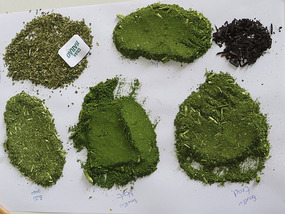
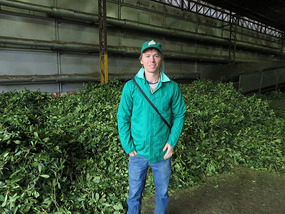




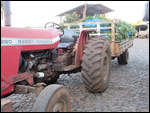
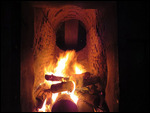
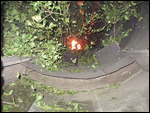
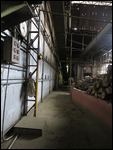
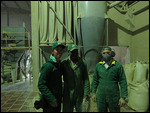
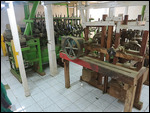
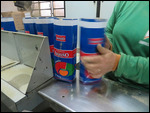

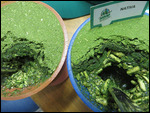
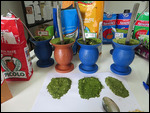
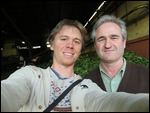
metamate
2014-07-28
Barao is one of the best erva at all, and the Piccolo family are deserves the title of Barons of Erva Mate. Our labortory exams in German university showed that barao has the highest levels of purity among 30 brands researched. One small correction, the colors of the leaves do not only depend on the sun exposure. Different than Argentinean Yerba Mate, which is only one quality, Brazilian forest have about 30 kinds of trees, so the color differs from the quality as well. One can find very large leaves with much lighter color in the forest than the usual leaves under the sun.